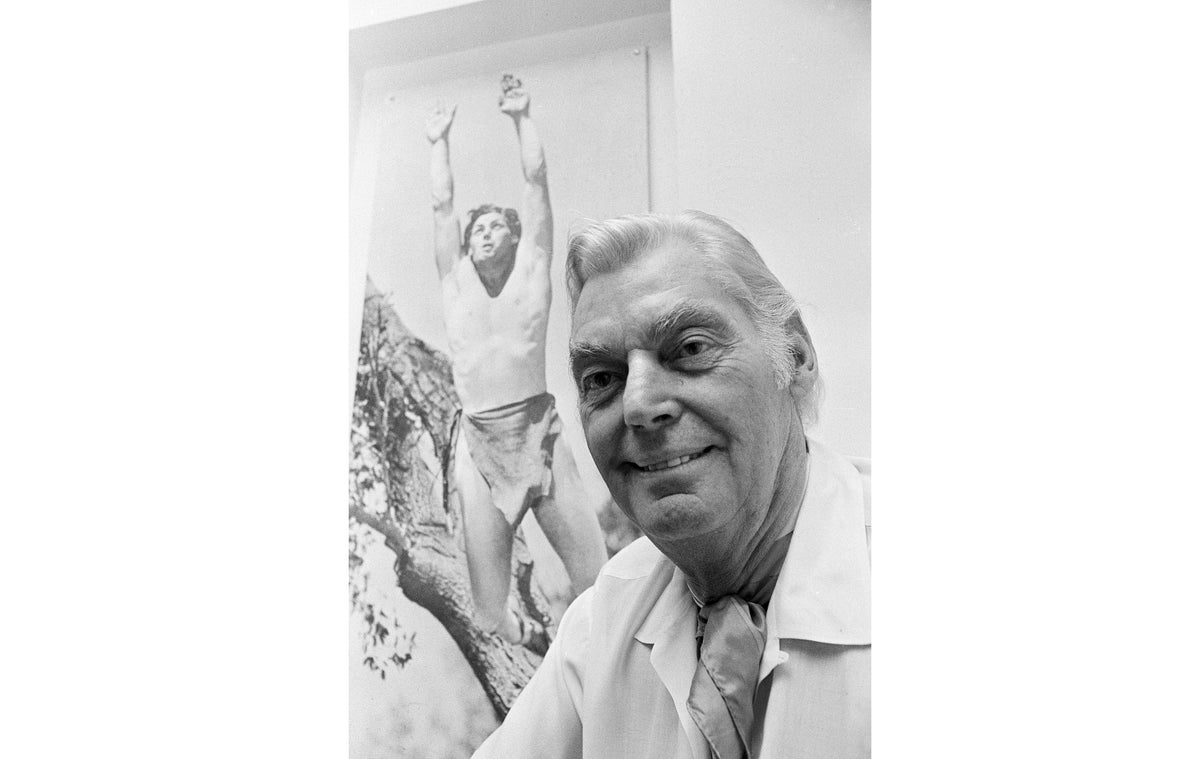
Support truly
independent journalism
Before there was Michael Phelps or Mark Spitz winning Olympic gold medals for the United States — there was Tarzan.
Yes Tarzan, the fictional literary and film character who was raised by apes in the African jungle.
This of course was Johnny Weissmuller, who played Tarzan in the films but was also a swimming superstar 100 years ago. He won three gold medals at the 1924 Paris Olympics: the 100-meter freestyle, the 400 free, and the 4x200 relay. Weissmuller also won bronze in water polo in an Olympics that featured many stars including Paavo Nurmi.
Weissmuller defeated Duke Kahanamoku in the 100 final after the famous Hawaiian — often called the “father of surfing” — had won gold in 1912 in Stockholm and in 1920 in Antwerp. The 1916 Olympics were set for Berlin but canceled because of World War I.
Adolf Hitler and the Nazis hosted the 1936 Berlin Olympics, where the torch relay originated.
Weissmuller's swimming brought fame, and his virile image got him cast in the “Tarzan the Ape Man” film in 1932 — the first of his 12 Tarzan films.
There was, of course, the signature Tarzan yell — akin to a yodel — and what the character's creator Edgar Rice Burroughs described as “the victory cry of the bull ape."
Weissmuller won two more golds in the 1928 Amsterdam Olympics and could have won a third had he not been pulled from the 400 to play for the water polo team.
He set a world record in the 100 of 57.4 seconds prior to the 1924 Olympics that stood for a decade. The world record now is 46.80. He was also the first to go under 5 minutes for 400 meters, setting a world record of 4:57.0 in 1923.
He was a trailblazer, the first to swim 100 meters under 60 seconds. He is regarded as the first athlete to sign an endorsement deal with a sportswear line. He was among the first members inducted into the International Swimming Hall of Fame.
Weissmuller was selected in 1950 by The Associated Press as the “Greatest Swimmer of the Half Century” and made famous the American crawl stroke with his chest high out of the water.
Tarzan the sex symbol
Hollywood producer Bernard Hyman thought Weissmuller's name was too long, but was told he was famous as an Olympian. The name shouldn’t be changed, he was warned.
“All right then,” he said. “We’ll just lengthen the marquee. And put lots of water in the film.”
The writer Cyril Hume, who worked on the Tarzan script, tells a widely published story about taking Weissmuller in front of Hyman and others for his “screen test.”
Weissmuller was told to take off his clothes.
“I didn’t realize what was going on,” Weissmuller was quoted as saying. “They asked me if I could climb trees and I said yes. And they asked me could I pick up a girl and walk away with her, and I said yes. And that’s all there was to the test. I had the part.”
Tarzan’s love interest was Jane Parker, played by Maureen O’Sullivan, an Ireland-born actress who was Jane in the first six Tarzan films made by MGM. Her star on the Hollywood Walk of Fame faces Weissmuller’s.
Buster Crabbe, who won Olympic gold in swimming in 1932, played Tarzan in one film for Paramount — “Tarzan the Fearless” — as it unsuccessfully challenged MGM's series.
A hero on the screen, Weissmuller was also a real-life hero. He and his brother, Peter, are credited with saving the lives of 11 people in a boating accident on Lake Michigan in 1927.
He was married five times and died in Acapulco, Mexico, in 1984 and is buried there.
Weissmuller's roots
Weissmuller was born Janos (Johann) Peter Weissmuller on June 2, 1904, to German parents in Freidorf, which is now a district of the Romanian city of Timisoara. At the time it was part of the Austro-Hungarian Empire.
The family immigrated to the United States when he was an infant and eventually settled in Chicago in 1908. He contracted polio as a 9-year-old and took up swimming as a remedy. Some of his first swimming lessons were in Lake Michigan.
He was discovered by famed coach Bill Bachrach and, in an official biography of Weissmuller, Bachrach recalled an early meeting.
“He had the gawkiness of an adolescent puppy. Also the stroke he used was the oddest I ever saw," Bachrach said. “But the stopwatch told it all. Nearly record time.”
Weissmuller became a symbol of American culture in the early part of the 20th century, popularized swimming and often bragged that he never lost a race.
“That is not true, but it's close,” said Olympic historian Dr. Bill Mallon. Mallon said Weissmuller was defeated in a backstroke race — not Weissmuller's primary stroke — by Ludy Langer. And likely in another race against Langer, also an Olympian.
“He definitely stands out,” Mallon added. “Don't know if he was overshadowed by (Paavo) Nurmi — at least not in the USA."
Better than Spitz?
In a 1972 interview with the New York Times, Weissmuller compared himself to Spitz, who won seven gold medals that year in the Munich Olympics. He won two more on relays in 1968 in Mexico City.
“I was better than Mark Spitz is,” Weissmuller said. And he explained why.
“It's easier to go faster now,” he said. “On a turn, they don’t have to touch with their hand, they just flip and push off; that’s a split second. The platform is higher and the pool is deeper so when you enter the water that’s a couple strokes. And the water’s smoother. We didn’t have the lane ropes, we had to get up higher in the water to avoid the little waves. It all adds up.”







